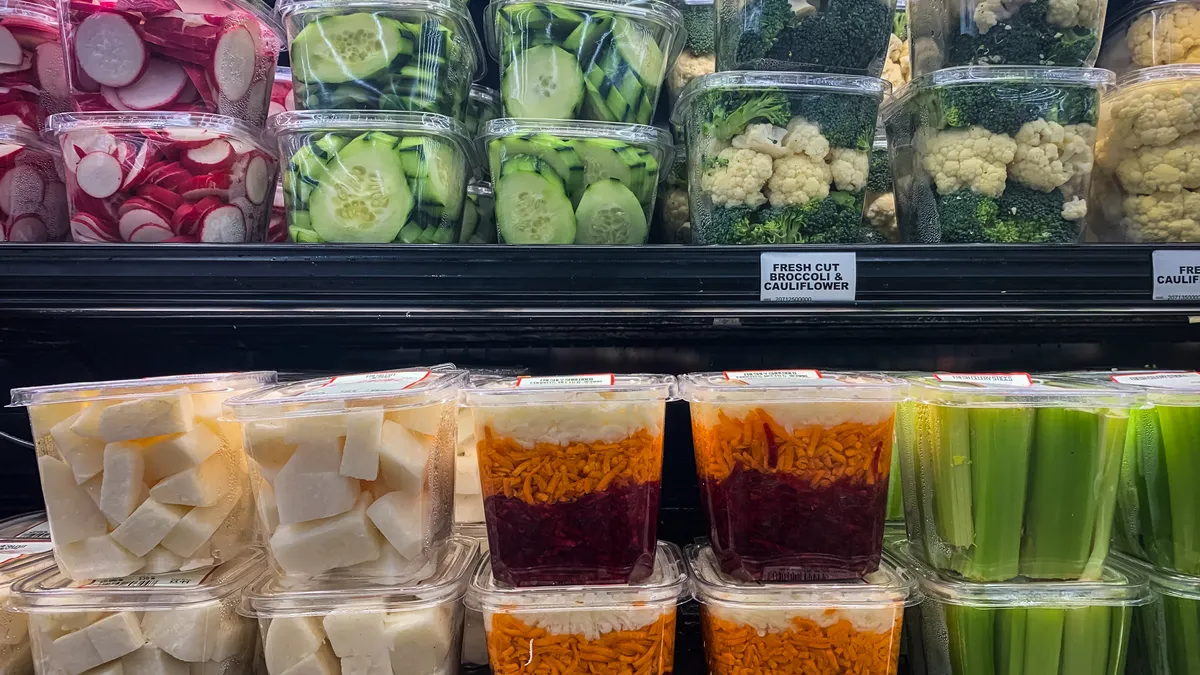Packaging groups are telling federal agencies fighting food waste to embrace packaging technology as a more prominent solution in a national strategy.
The U.S. EPA, Department of Agriculture and Food and Drug Administration in December announced the Draft National Strategy for Reducing Food Loss and Waste and Recycling Organics. It’s meant to be a “whole-of-government” approach toward a joint goal of halving food loss and waste by 2030, against a 2010 baseline. It also aims to increase organics recycling. Implementation would begin this year.
Packaging’s role in reducing food loss is “underrecognized,” according to comments recently submitted by Ameripen. It cited research suggesting that two-thirds of food waste is a result of storage issues, and that a quarter of household food waste could be reduced through “optimized packaging.”
The draft strategy also drew comments from the likes of Tetra Pak, BPI and the Can Manufacturers Institute, which in part noted how packaging could be better highlighted and researched as a food preservation solution.
These were just some of the themes across feedback from two of packaging’s prominent trade groups, Ameripen and the Flexible Packaging Association:
Food packaging has a PR problem
Consumers sometimes worry about the environmental impact of extra packaging without fully understanding the carbon footprint associated with spoiled food going to waste, the groups said.
The assumption that packaging is worse than food waste “is disconcerting when we consider that the majority of wasted food in North America occurs in the household,” Ameripen wrote. “The current negative public discourse around packaging is causing consumers to eschew packaging altogether.”
Some consumers choose to unpack foods to “let them breathe,” effectively removing protection that extends longevity, FPA explained. Consumer education on the topic could help, FPA indicated, as understanding packaging’s role in keeping food fresher for longer can result in less negative consumer perceptions.
Don’t play favorites by material type
Ameripen said the strategy “should embrace all packaging materials” and support data-driven decisions in selecting packaging materials and formats. Factors include oxygen absorption, chemical migration, weight, ease of use and setting — such as retail versus e-commerce. “We therefore caution the agencies not to emphasize one material or format over another, but rather rely more on holistic analysis and tools to identify where we can achieve the highest and best use.”
FPA cautioned against conflicting strategies across agencies, saying that EPA’s Draft National Strategy to Prevent Plastic Pollution “villainizes plastic packaging” and could disincentivize using those materials to preserve food for longer — one of the very purposes of this tri-agency strategy.
FPA said it supports using peer-reviewed life cycle analyses to evaluate packaging materials. Additionally, while “biobased plastics should be explored, they should be subject to the same metrics as all other packaging materials,” FPA wrote.
Biobased packaging must align with organics recycling access
The draft states USDA would research food packaging materials from biobased polymers, as such packaging can “protect and enhance food products, eliminate or reduce pathogens, address antimicrobial resistance, extend shelf-life, and reduce food waste and reliance on fossil fuel-based packaging.”
Composting options and related consumer education must be scaled before biobased plastic packaging is widely adopted, FPA wrote. And not all industrial composting programs accept biobased plastic or related food packaging. Additional investment in industrial composting must come first; one way to move this forward is by supporting the Recycling and Composting Accountability Act, FPA wrote. That bill was reintroduced in the Senate last year.
Ameripen said that research of these biobased packaging materials, as well as composting acceptance, will be critical to building consumer confidence. It may be beneficial to “consider ensuring that funding for compostable facilities is tied to the acceptance of compostable packaging,” the association wrote.












